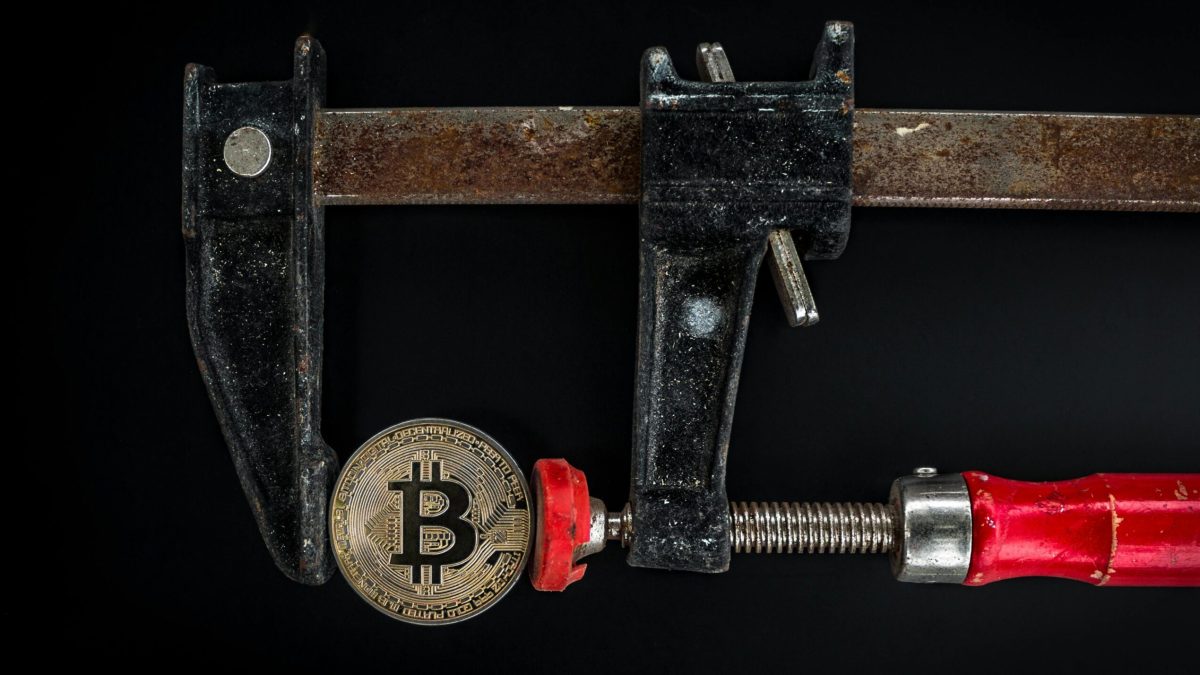Bitcoin has repeatedly failed to break past the $85K resistance as the market remains devoid of bullish catalysts.
Since April 13, the flagship cryptocurrency has traded within a narrow range of $83,000 and $85,000, with price action weighed down by a mix of macroeconomic factors.
When writing, Bitcoin’s weekly gains stood at a little over 4% while its market cap hovered around the $1.6 trillion mark.
What’s holding back Bitcoin?
This week, several bearish forces have come into play, prompting investors to adopt a more cautious stance.
This is evident from the Crypto Fear and Greed Index, which is hovering near the lower end of the Fear zone at 30, as of press time.
One key factor weighing on sentiment is renewed geopolitical tension between the US and China.
On Wednesday, markets turned risk-averse after the Trump administration introduced fresh curbs on Nvidia’s chip exports to China.
The move rattled global equities and stoked fears of another escalation in trade tariffs, dragging the tech sector and broader risk assets lower.
Adding to the uncertainty, reports surfaced that Chinese authorities may be liquidating confiscated Bitcoin through offshore exchanges.
While unconfirmed, such reports tend to spook investors and have added further pressure to already fragile crypto sentiment.
More pain followed as US Federal Reserve Chair Jerome Powell signalled a more hawkish stance than markets had anticipated.
During his April 16 speech, Powell stated that the Fed is in no rush to cut interest rates, reinforcing a “wait-and-see” approach amid growing economic uncertainty.
His remarks further dampened investor sentiment, especially after he flagged the inflationary risks posed by President Trump’s newly announced tariffs.
Powell warned that the scale of the tariff hikes was “significantly larger than anticipated” and could likely lead to “higher inflation and slower growth.”
What’s next for Bitcoin?
With restrictive monetary policy likely to stay in place longer, markets have had little reason to switch back to risk-on mode.
For Bitcoin, this means continued suppression around key resistance levels, as traders weigh the broader economic outlook before taking on more exposure.
Technically, Bitcoin must flip the $86,000 resistance into support to reignite bullish momentum toward $90,000 and beyond.
According to market pundits, BTC first needs to reclaim the 200-day EMA at $87,740, a level it lost on March 9 for the first time since August 2024.
On the downside, failure to reclaim key levels opens the door to more pain. Bears are likely to defend the $86,000 mark aggressively, potentially pushing BTC back below $80,000.
According to MN Capital founder Michael van de Poppe, losing this key support could trigger further downside, with prices likely to slide toward the $74,400–$76,600 range, the final line of defence before a deeper correction sets in.
#Bitcoin is still stuck in the range, and as long as it stays above $80K, I think we’ll be fine with further upwards momentum on this one.
Further weakness may even trigger a retest of the US election day low at $67,817, erasing the gains from the so-called “Trump pump.”
According to analyst James Check, the true bottom for Bitcoin lies around $65,000 based on the average cost basis for active investors and a key long-term support area.
This represents the average cost basis for active investors, essentially reflecting the price at which most market participants acquired their BTC. As such, it serves as a critical long-term support zone.
“$75K is where bulls need to defend. If not, we’re heading back into chop — and the flag in that sea of sand is $65K,” he added.
A drop to $65k could restart the bullish rally
However, according to some, a correction toward the mid-$60,000 range could be the shakeout Bitcoin needs to reset sentiment and fuel the next leg higher.
Trader Altstein, for instance, shared a contrarian view suggesting that a dip to the $69K–$65K region may precede a renewed bull phase that could eventually send BTC as high as $150,000.
BTC/USD weekly chart. Source: Altstein
While the $150K target may appear ambitious, the idea of a healthy correction before continuation aligns with broader market cycles.
Historically, Bitcoin has often revisited key cost-basis levels during periods of macro uncertainty before staging strong recoveries.
Such a scenario would also align with underlying supply-side dynamics currently developing across the market.
Data from CryptoQuant shows that Bitcoin reserves on exchanges have continued to plunge, now sitting near multi-year lows.
Historically, such conditions have preceded major price rallies, especially when paired with rising demand or a shift in investor sentiment.
On the flip side, if Bitcoin avoids a deeper correction and holds above current support levels, the recent breakout above the 2025 trendline could gain traction.
A close above $88,000 would be key, potentially setting the stage for a move toward $90,000 and beyond as suggested by pseudonymous analyst Crypto Caesar in a recent X post.
$BTC – #Bitcoin has tried to break out several times. Now $BTC has finally broken out. As you can see, it is now very important for bitcoin to break the 88K level.
The post Crypto traders split on BTC’s next move: $88K breakout or $65K reset? appeared first on Invezz






